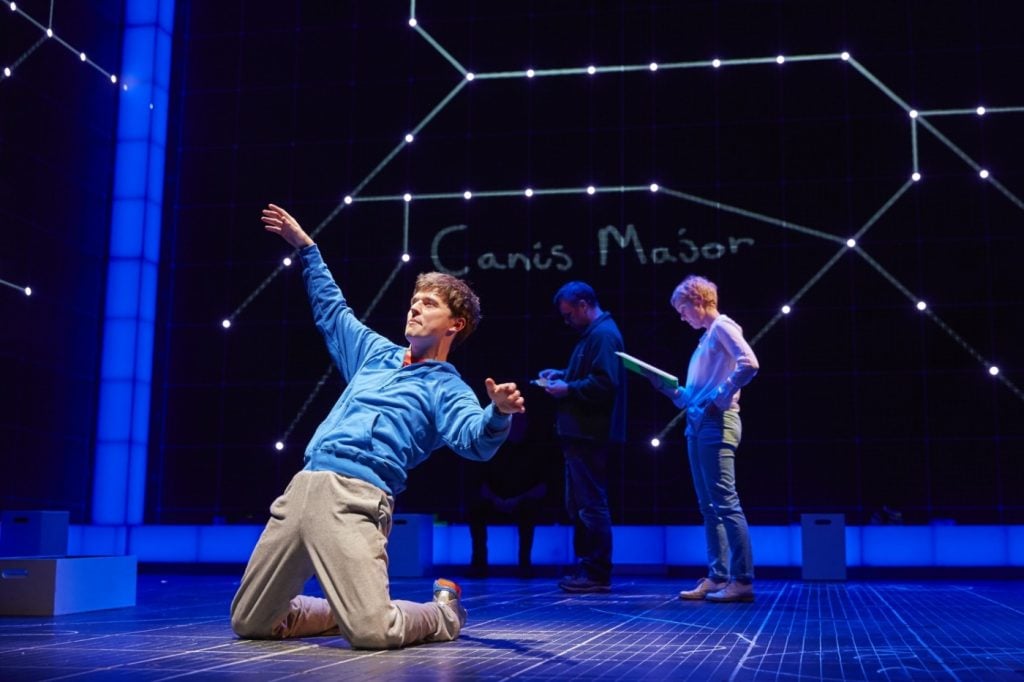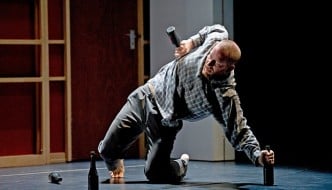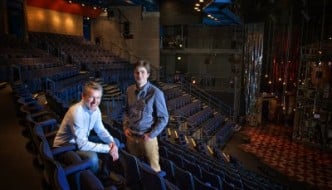
Mark Haddon’s novel The Incident of the Dog in the Night-time is a memorable novel which delves into the mind of 15-year-old Christopher using pictures as well as words to illustrate the life of someone with Asperger Syndrome. The story begins with the discovery of his neighbour’s dog, Wellington, who has been speared with a pitch-fork in the middle of the night. Despite his father’s orders, Christopher decides to investigate the murder in a Sherlock Holmes-like manner. Although the story begins as an innocent investigation of an outsider’s pet, it soon forces Christopher to look at his own home and broken family, questioning the death of his mother and his father’s manipulation of events. The plot is compelling in itself, but what really makes this novel stand out is the way Haddon presents the challenges thrown up by Christopher’s condition, and the way he overcomes them.
Fourteen years later, The Lowry brings the novel to life on stage and does not fail in making the play equally as unique. The stage is in itself impressive—each wall (including the floor and ceiling) almost works like a computer screen with a black background. The director makes use of this technology in order to recreate the images and emotions in Christopher’s head. When Christopher was overwhelmed, it would echo the sense of claustrophobia by bombarding the audience with images. If Christopher told himself to “follow the red line”, the director would present the viewers with an ‘imaginary’ red line on the floor for Christopher to follow. This incredible technology enabled the insertion of the audience into Christopher’s mind, echoing the ebb and flow of his emotions.
Although the setting was clearly impressive, the play would not have been the same without Scott Reid’s performance. In contrast to the emotional distance often associated with Asperger’s Syndrome, Reid succeeds in pulling in the audience and creating an emotional bond between actor and viewer. This was done with the aid of supporting actors, such as the pained mother and Lucianne McEvoy as his teacher Siobahn. The role of his father, played by David Michaels, illuminated the difficulties faced by parents of a child with Asperger’s Syndrome. If I were to make any criticisms on the acting, it would perhaps be that David Michaels’s bursts of anger seemed a little forced, although the scenes of genuine fatherly love were spectacularly acted out.
All in all, this is a play that should not be missed. Never have I stood up from my seat, awestruck and speechless, the way I was when The Curious Incident of the Dog in the Night-time came to a close. Like the novel before it, it is a unique masterpiece that audiences won’t be able to compare to any other performance.
Filed under: Theatre & Dance
Tagged with: aspergers, mark haddon, stage, The Curious Incident of the Dog in the Night-time, The Lowry, theatre



Comments